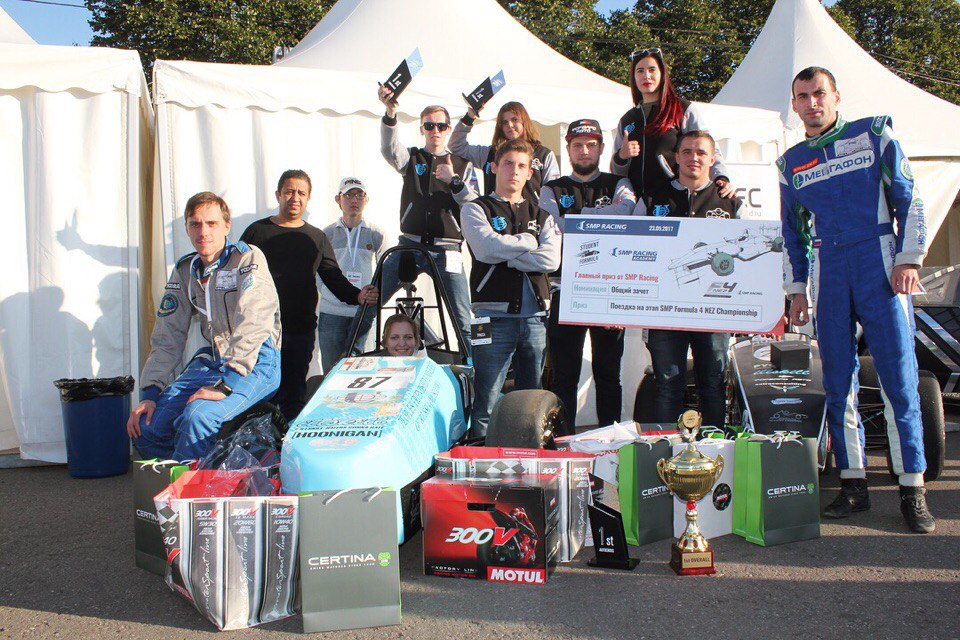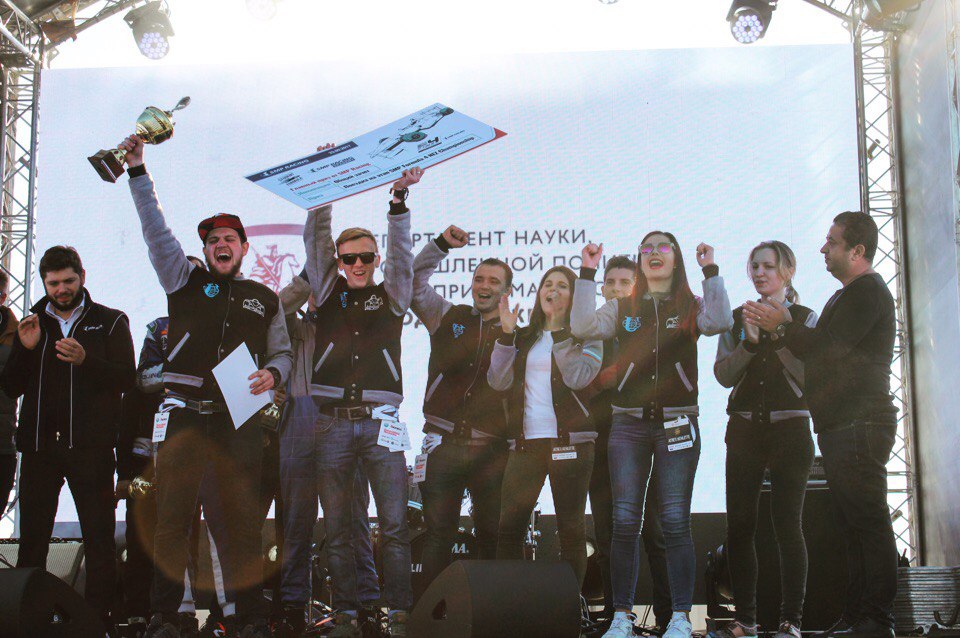FS RUDN team - absolute leader in the overall standings of «Formula student» Russian stage
The competition took place 21 - 23 September, 2017, and brought together 12 best teams from Russia and Europe. It was organized by the Department of science, industrial policy and entrepreneurship of Moscow in cooperation with SMP Racing, Power Wheels, Rosatom, Association of Automobile Engineers, Certina, ISIC, 5th Wheel, Popular Mechanics, Dni.Ru, Moskva-24, m24.ru, Aktualnaya Moskva.
Participants:
- FS RUDN (RUDN, Moscow)
- Bauman Racing Team (Bauman University, Moscow)
- FDR Moscow (Moscow Polytechnic Institute, Moscow)
- FS MADI (Moscow Automobile and Road University, Moscow)
- Formula Electric MADI (Moscow Automobile and Road University, Moscow)
- Togliatti Racing Team (TSU, Togliatti)
- Shukhov Racing Team (Shukhov Technical University, Togliatti)
- Dream Style Garage (Nosov Technical University, Magnitogorsk)
- Neftegaz Engineering (TEU, Tyumen)
- NCM Polytech (SPPU, St.Petersburg)
- TU BRNO Racing (Brno, Czech)
- FS Team Tallin (Tallinn, Estonia)
Products derived from microalgae represent a cutting-edge development in the field of bioeconomy. The potential of this biological resource was discussed at the international research seminar “Foundations for a Green Sustainable Energy”, part of the BRICS Network University’s thematic group on “Energy”. The event was organized by the Institute of Ecology at RUDN University.
Ambassadors of Russian education and science met at a conference in RUDN University to discuss how they can increase the visibility of Russian universities and research organizations in the world, and attract more international students in Russia.
The international scientific seminar hosted by RUDN Institute of Ecology “Experience of participation in student organizations as a way to form career skills” united scholarship recipients of the International Student Mobility Awards 2024 and Open Doors, along with members of the scientific student society “GreenLab” and the professional student association “Kostyor (Bonfire)” shared their projects focused on environmental protection.

